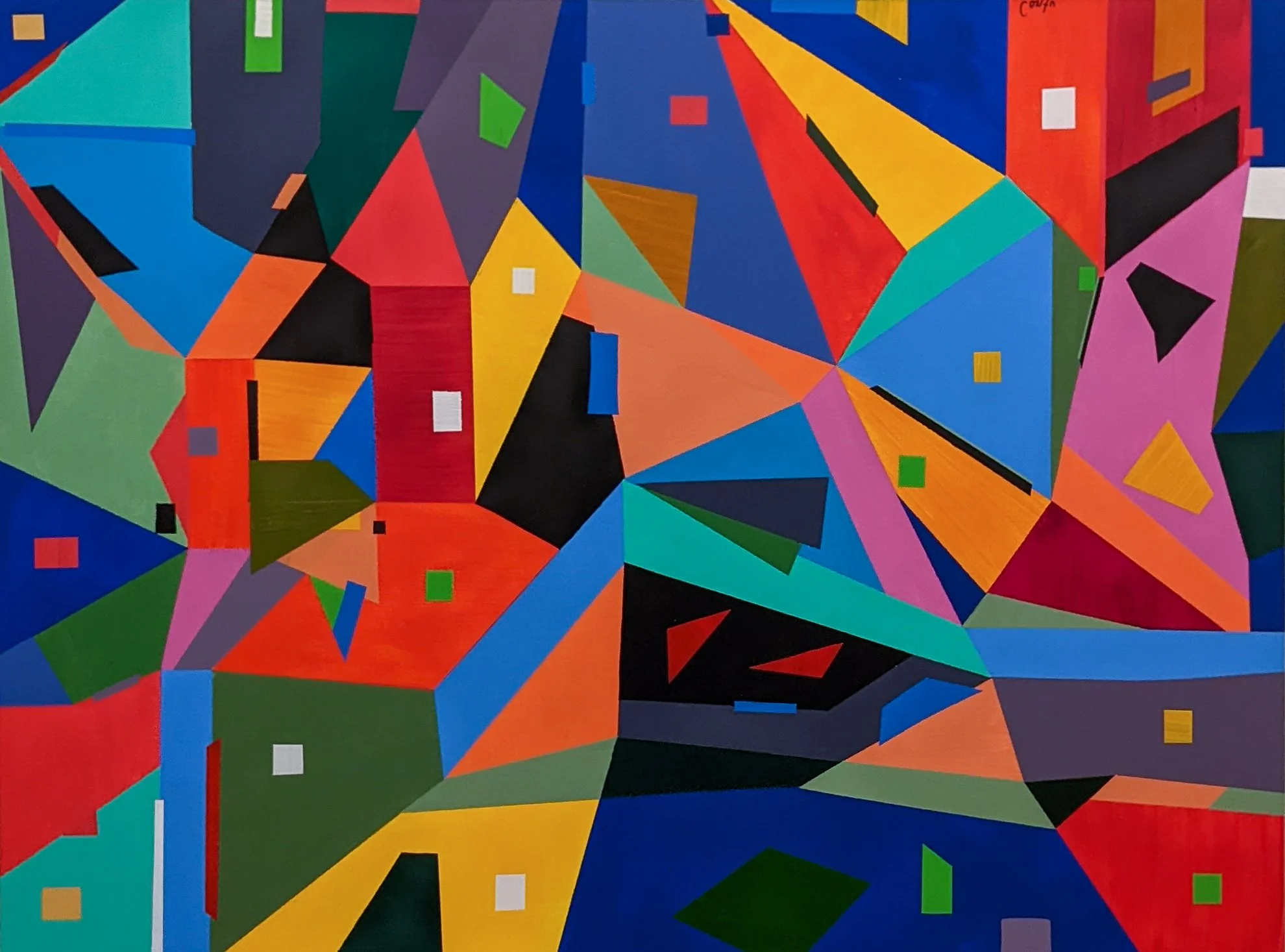Collage Communications: Cassandra C. Jones
By Grace Miles
Compelled by “the mechanics of visual culture,” Ojai-based artist Cassandra C. Jones uses digital art and photography to consider the forces of environmentalism and consumerism on our threatened world.
With her heart firmly set on becoming an artist, Jones earned her BFA at the California College of the Arts in 1998, and her MFA six years later at Carnegie Mellon University. Her work in photography and film has been shown in galleries and exhibitions across the country, and she regularly participates in speaking engagements and teaching opportunities in the California area.
Collages flush with color and mesmerizing in their detail form the core of her work. Illusory and delightful, she transforms bulbous hot air balloons into delicate orchids; metallic gold party balloons into daubs of dandelion fluff; the feathers of a bird in flight into the roaring maw of a bear.
While the effect on the eye is dazzling, the artistic process is in fact relatively straightforward. Each component of the collage is photographed by Jones herself, and carefully spliced into a transparent image in Photoshop. The image is then duplicated, sized and rotated with great precision to create a new composite image. This type of collage-based art requires the viewer to “be generous;” to take a step closer and let the eye roam as it attempts to unravel the initial deception.
Cassandra C. Jones, Aloe of Sixes, digital collage
Large-scale installations, featuring multiple designs crafted from hundreds of individual photographs, offer a particularly immersive way to experience Jones’ art. Her 2018 wallpaper installation True Stories wraps around the public stairwell of Baltimore’s Revival Hotel, enlivening the space with colorful motifs that are not only decorative, but informative. The designs were specifically crafted to pay homage to the city’s unique quilt-making history, using such items as beach balls, hula hoops and cat-eye glasses to echo traditional stitching patterns.
Closer to home, Jones recently completed Love Letters, a 2020 installation at Santa Barbara’s Paseo Nuevo done in partnership with the Museum of Contemporary Art Santa Barbara. Here, her distinctive designs embellish a massive, six hundred-tile mural in the mall’s north court. Just as True Stories commemorates the culture and history of Baltimore, Love Letters commemorates those unique to Santa Barbara. Her designs are arranged to mimic the familiar movement of waves and the rays of the sun, featuring bursts of brightly colored surfboards, fans flared in the hands of flamenco dancers, and intricate rings of Spanish guitars.
Cassandra C. Jones, Gravellia, digital collage
Though the Covid-19 pandemic brought the routines of ordinary life shuddering to a halt, Jones refused to neglect her creative pursuits as California went on lockdown. She took the initiative to establish an artist residency program at Ojai’s Taft Gardens, where she had visited years earlier and had long envisioned doing some kind of project for.
Set amid the furrowed hills along the edge of Los Padres National Forest, the secluded gardens contain a wealth of botanical wonders. With fifteen acres of exquisitely curated gardens, separate areas are devoted to trees, flowers and succulents particular to South Africa and Australia.
With the global effects of quarantine beginning to refresh concerns over the depth of humanity’s influence on the environment, Jones spent her time at the Taft Gardens creating art that examines this perilous relationship between man-made objects and the natural world. Basing her designs on plants that were just steps away from her studio, she sought to creatively represent the ways in which “the natural world absorbs the human world on a subatomic level.”
In this series, photographs of mass-produced, disposable objects take the shape of stalks, leaves and flowers. Fern features strands of densely interlocked mylar party balloons, their metallic bodies deftly arranged to mimic the appearance of veins running through a leaf. Rows and rows of a single beach ball, meticulously sized and rotated, become a bulbous barrel cactus in Old Soul, as curving tendrils of green billiard balls form Aloe of Sixes.
This tenuous marriage of natural and artificial elements raises questions about the sustainability of our consumerist culture – what happens to these plastics, manufactured and replaced year after year by the thousand, when a birthday party ends, when summer is over or the game has ended? What are we creating, and what are we preserving?
The lively colors and whimsical nature of Jones’ art may appear at odds with this urgent message – but this is an artistic decision, entirely intentional. Collages such as Banksia, with its cluster of open-mouthed Muppet heads forming the flower’s central pod, use a playful visual appeal to entice the viewer closer as their eyes unconsciously strain to solve the illusion. Upon sparking that initial connection, the deeper conversation can begin. As visitors made their way through the Taft Garden studio, they were able to apply the shapes and forms of Jones’ collages to the very same plants they had seen outside, and consider how these plastic commodities have come to integrate themselves within our natural environment.
Cassandra C. Jones, Emoting, digital collage
Whether displayed in a large public installation or an intimate gallery show, the art of Cassandra Jones seeks engagement with its audience in order to stimulate social and environmental awareness. It asks us to examine the ways in which we construct our contemporary lifestyles, and how we interact with a dangerously commercial world.
So, things might look bright and delightful, but what are they really made of?
Cover Image: Cassandra C. Jones, Old Soul, digital collage








